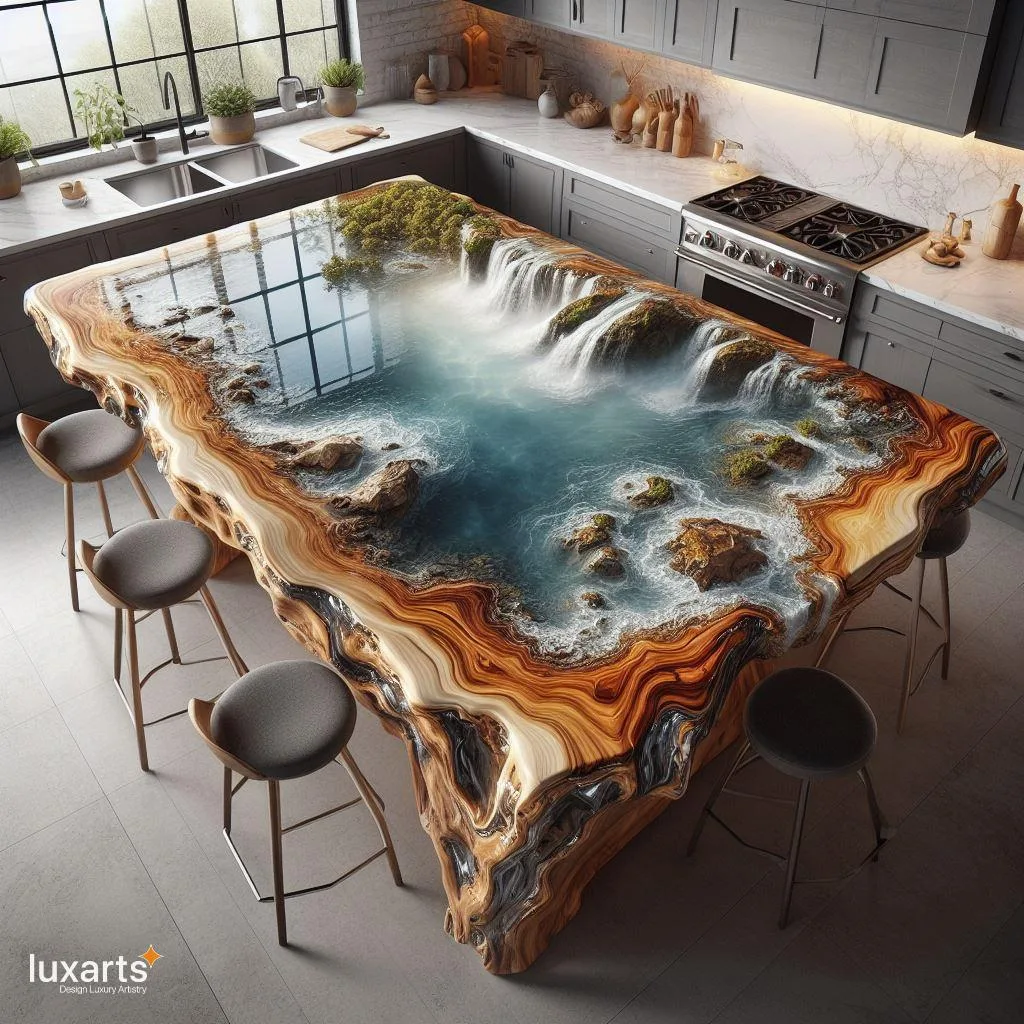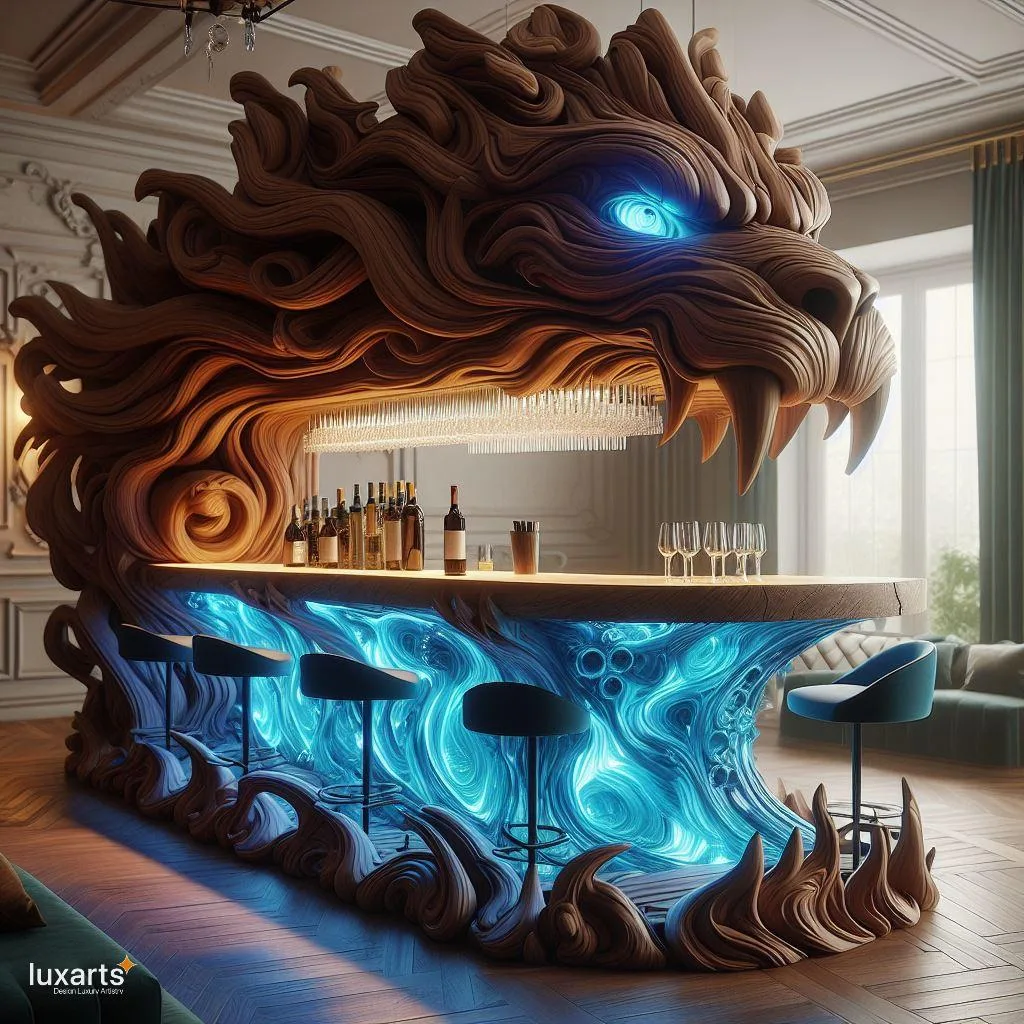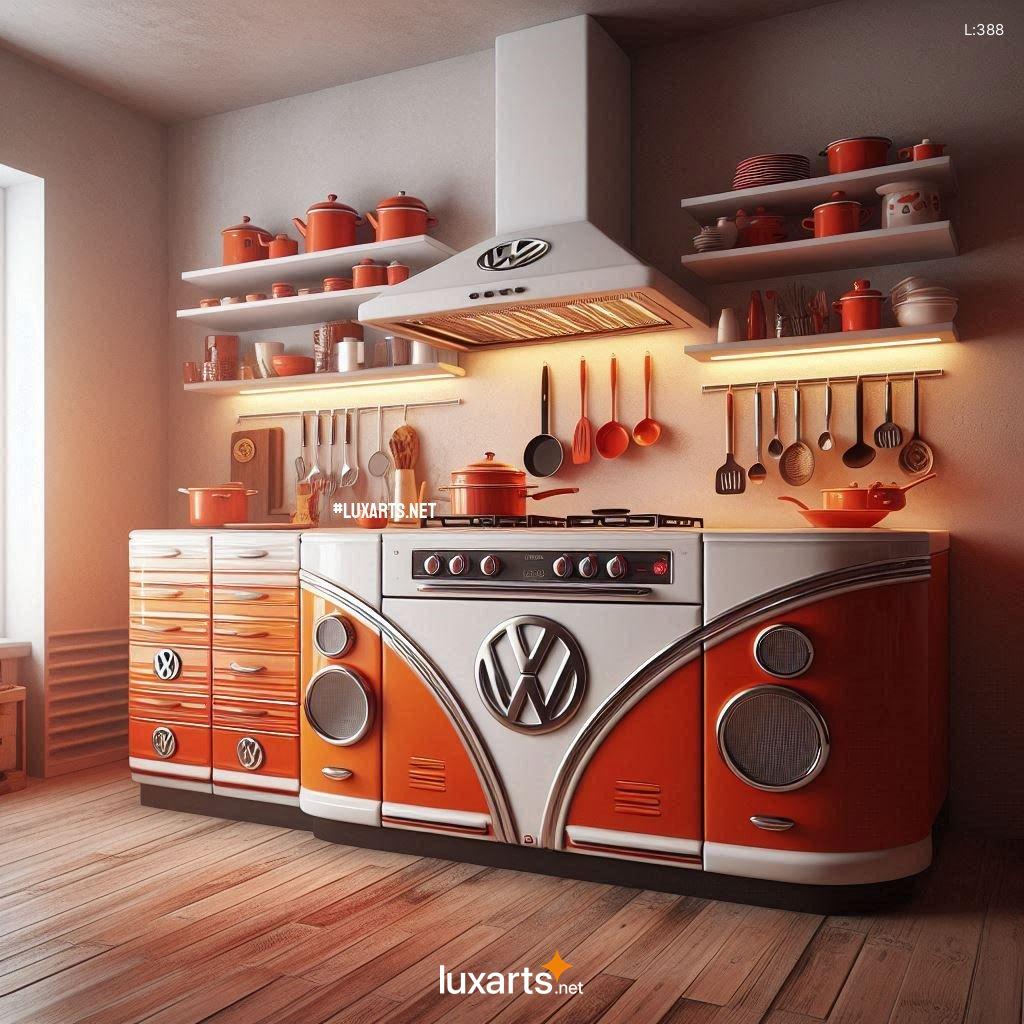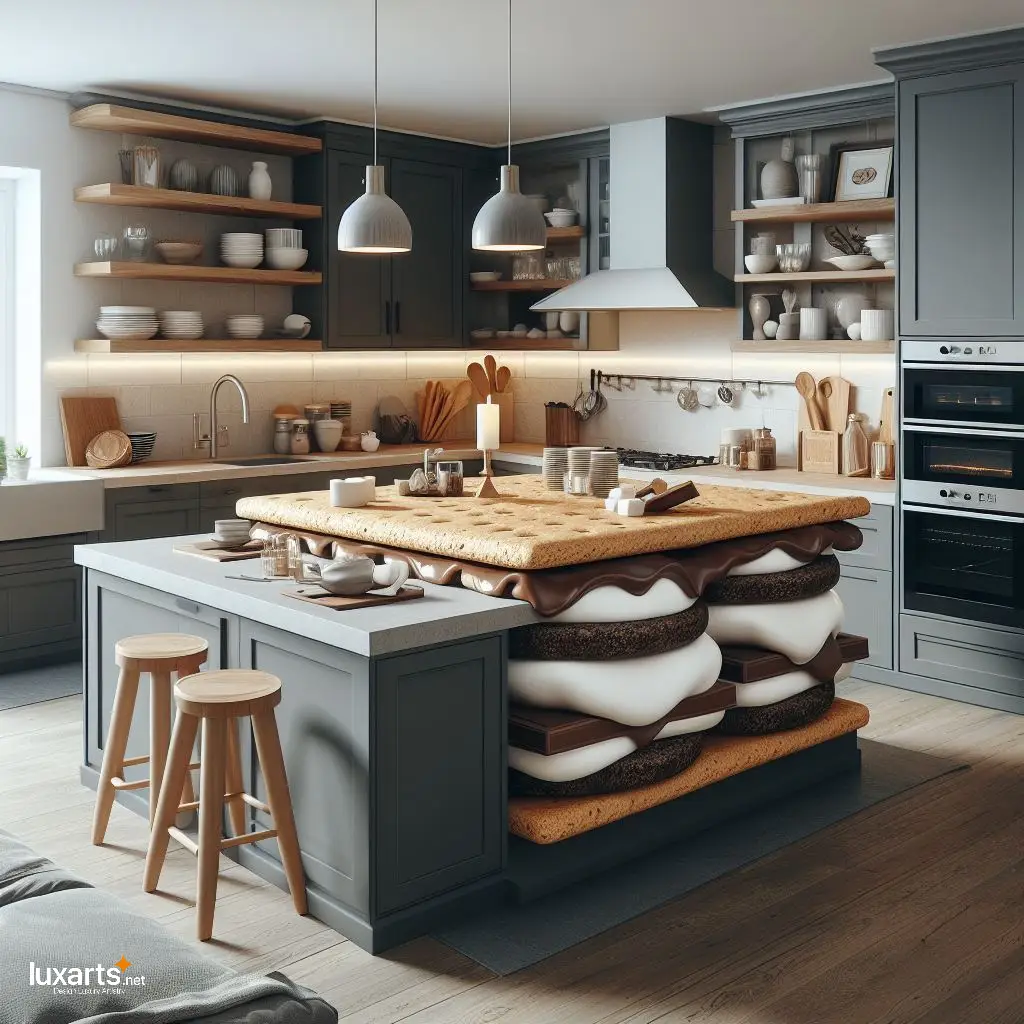Are you looking to add a unique and natural touch to your kitchen? Look no further than a natural wood and epoxy kitchen island. This combination of materials not only adds a beautiful aesthetic to your space, but also provides durability and functionality. In this blog post, we will explore the world of natural wood and epoxy kitchen islands, including its design options, benefits, maintenance tips, and cost comparison. Let’s dive in! 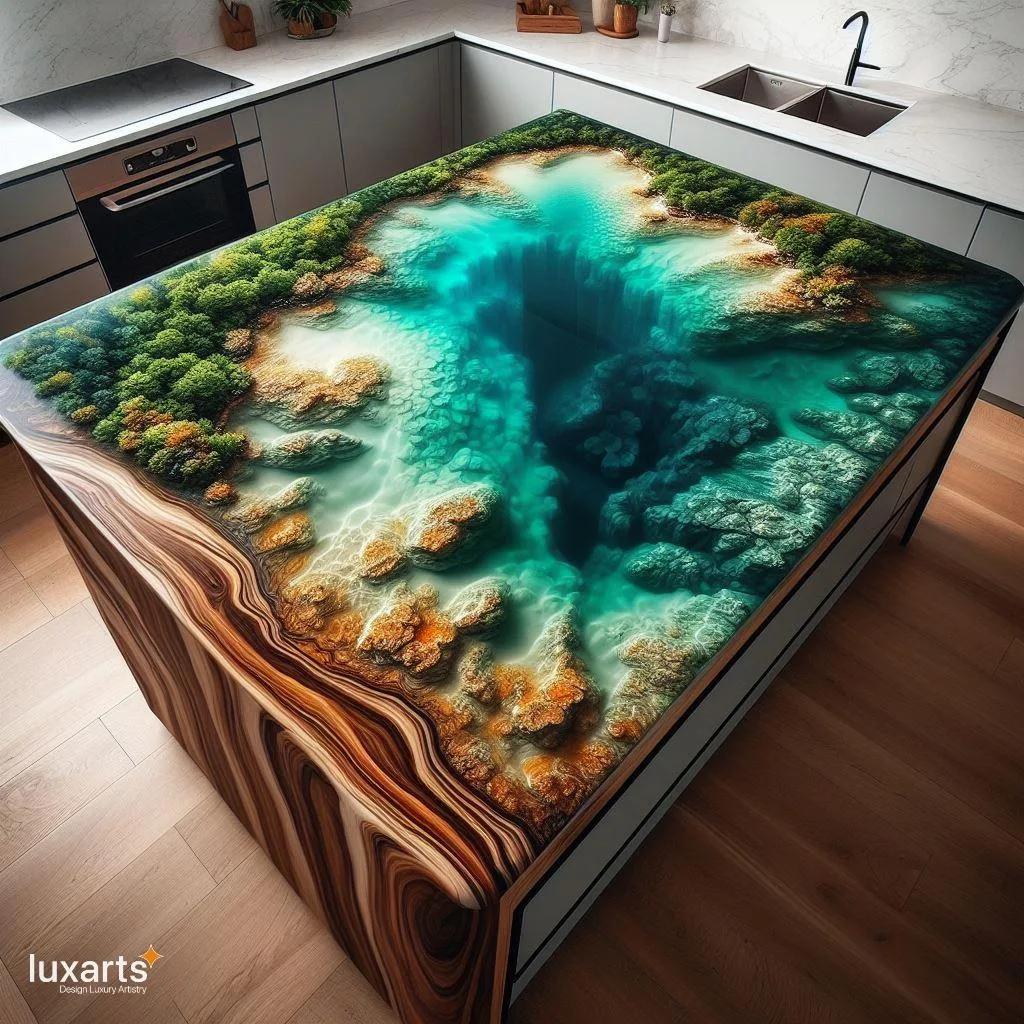
Introduction
A kitchen island is an essential element in any modern kitchen. It serves as a multipurpose space for cooking, dining, and socializing. With the rise of open-concept living, kitchen islands have become a focal point in many homes. As such, homeowners are constantly seeking ways to make their kitchen islands stand out and reflect their personal style. One way to achieve this is by incorporating natural wood and epoxy into the design. Natural wood and epoxy are two materials that may seem like an unlikely pair, but when combined, they create a stunning and unique look. The contrast between the warm, organic feel of natural wood and the sleek, glossy finish of epoxy creates a harmonious blend of nature and modernity. This combination not only adds visual interest to your kitchen but also provides practical benefits. Let’s take a closer look at what natural wood and epoxy are and how they can be used in kitchen island designs. 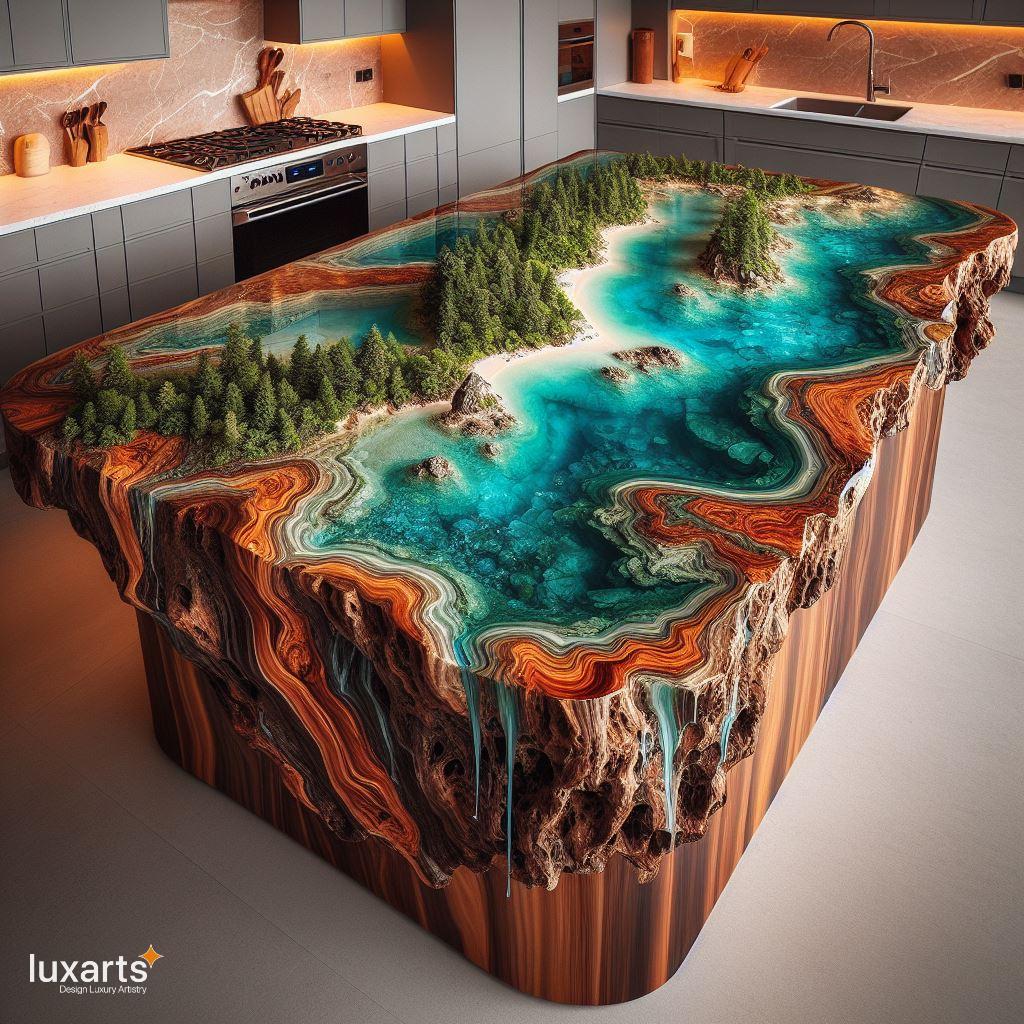
What is Natural Wood and Epoxy?
Natural Wood
Natural wood is a timeless and versatile material that has been used in interior design for centuries. It is derived from trees and comes in a variety of species, each with its own unique characteristics. Some popular types of natural wood used in kitchen design include oak, maple, cherry, and walnut. Each type of wood has its own distinct color, grain pattern, and texture, making it easy to find one that suits your personal style. Natural wood is known for its warmth and natural beauty, making it a popular choice for kitchen islands. It adds a touch of nature to your space and creates a cozy and inviting atmosphere. Additionally, natural wood is durable and can withstand the wear and tear of daily use in the kitchen. With proper care and maintenance, it can last for decades, making it a worthwhile investment. 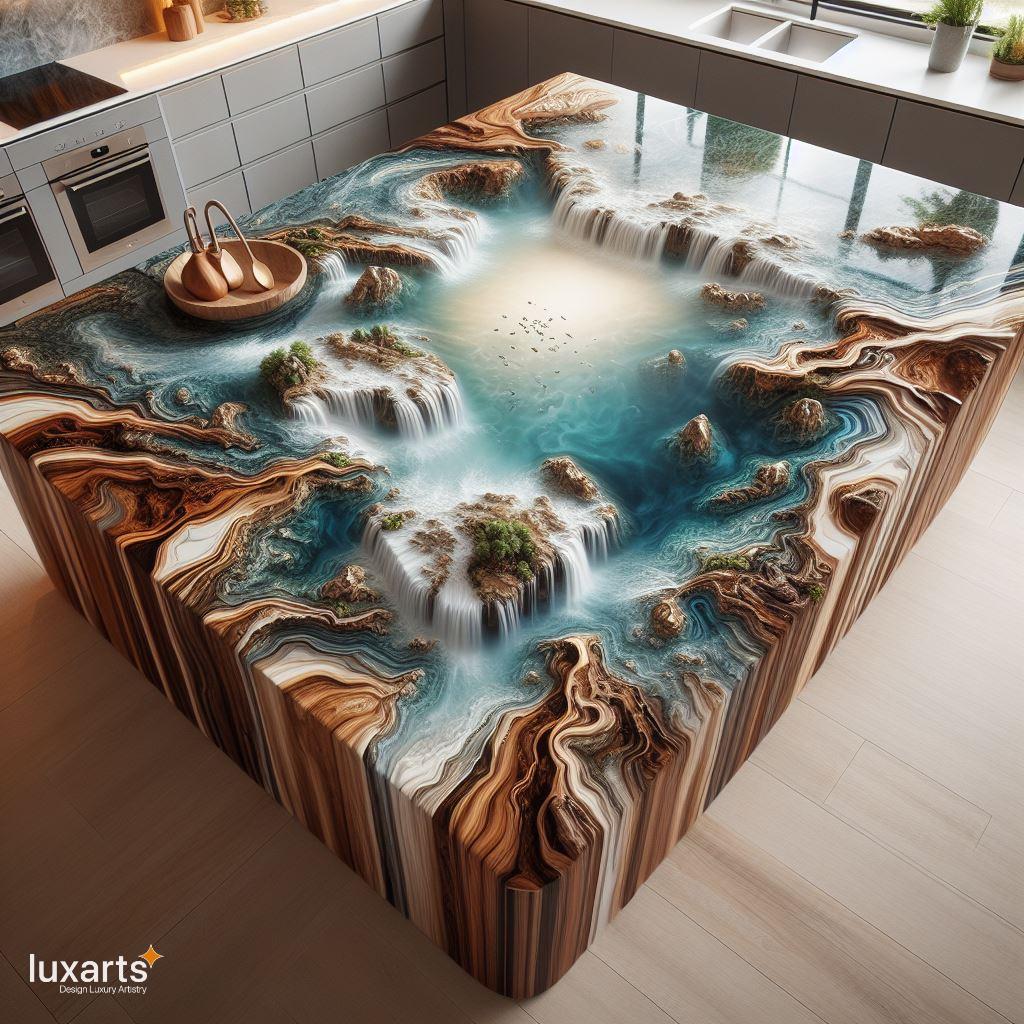
Epoxy
Epoxy is a type of resin that is commonly used as a coating for various surfaces, including floors, countertops, and furniture. It is made by mixing two components – a resin and a hardener – which then chemically react to form a strong and durable material. Epoxy comes in a variety of colors and finishes, but the most popular is a clear, glossy finish that gives surfaces a sleek and modern look. In recent years, epoxy has gained popularity in kitchen design, particularly for kitchen islands. Its smooth and seamless finish makes it easy to clean and maintain, making it a practical choice for high-traffic areas like the kitchen. Additionally, epoxy is heat-resistant and can withstand spills and stains, making it an ideal material for food preparation and dining. 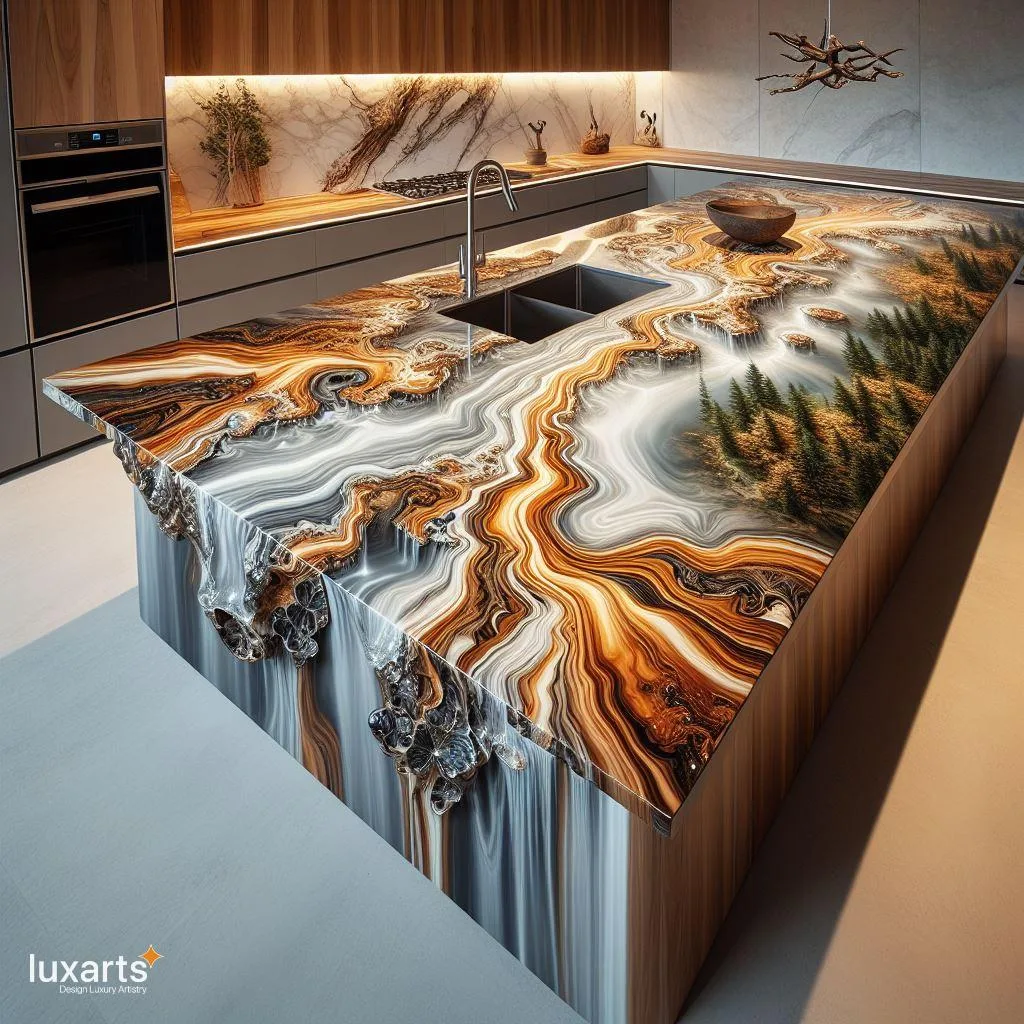
Design Options for Natural Wood and Epoxy Kitchen Islands
When it comes to incorporating natural wood and epoxy into your kitchen island design, the possibilities are endless. Here are some design options to consider:
Full Epoxy Coating with Natural Wood Base
One way to incorporate both materials into your kitchen island is by using a full epoxy coating on top of a natural wood base. This design option allows you to showcase the natural beauty of the wood while also adding a modern and glossy finish with the epoxy. You can choose to have the epoxy cover the entire surface of the island or create patterns and designs with different colors of epoxy. 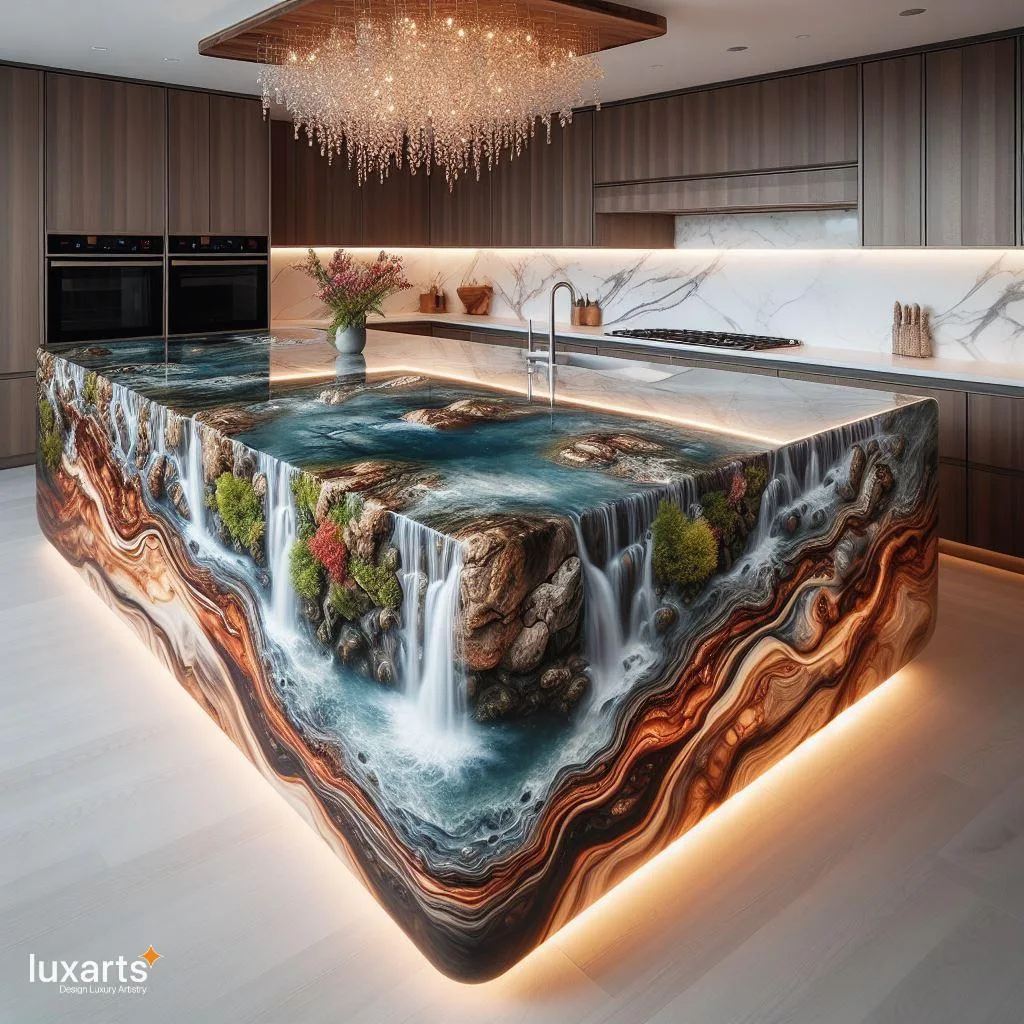
Epoxy River Table
Another popular design trend is the epoxy river table, where a river-like design is created using epoxy and natural wood. This design option involves pouring epoxy into a mold with a piece of natural wood in the center, creating a unique and eye-catching feature for your kitchen island. The wood can be left in its natural state or stained to add more color and contrast.
Epoxy Inlay
For a more subtle incorporation of epoxy into your kitchen island, consider using it as an inlay on top of a natural wood surface. This design option allows you to add a touch of modernity to your island without completely covering the natural wood. You can create different patterns and designs with the epoxy, such as geometric shapes or a marbled effect. 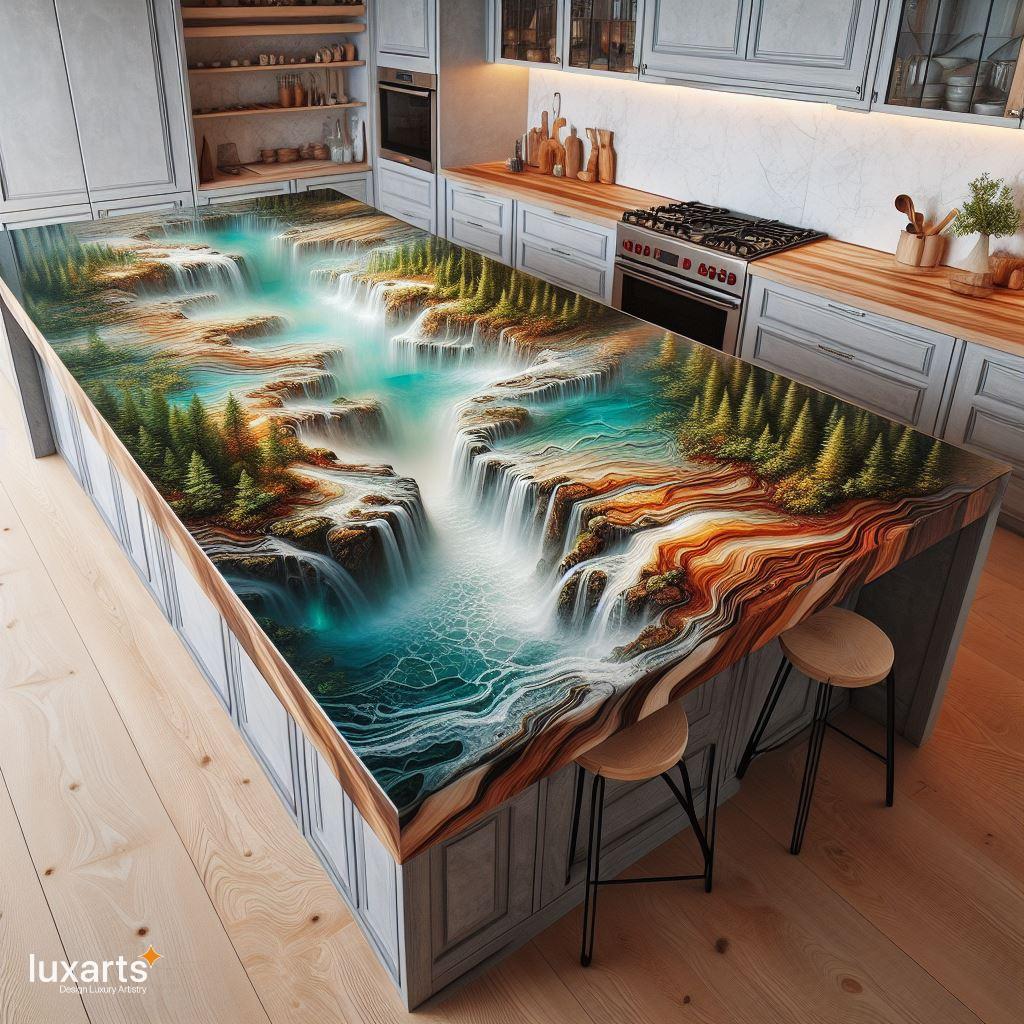
How to Incorporate Natural Wood and Epoxy into Your Kitchen Island Design
Now that you have some design options in mind, let’s discuss how you can incorporate natural wood and epoxy into your kitchen island design.
Consider Your Existing Kitchen Design
Before deciding on the type of natural wood and epoxy combination for your kitchen island, consider your existing kitchen design. You want your island to complement the rest of your space, so take into account the colors, materials, and overall style of your kitchen. For example, if you have a modern and minimalist kitchen, a full epoxy coating with a sleek and simple natural wood base would fit right in. 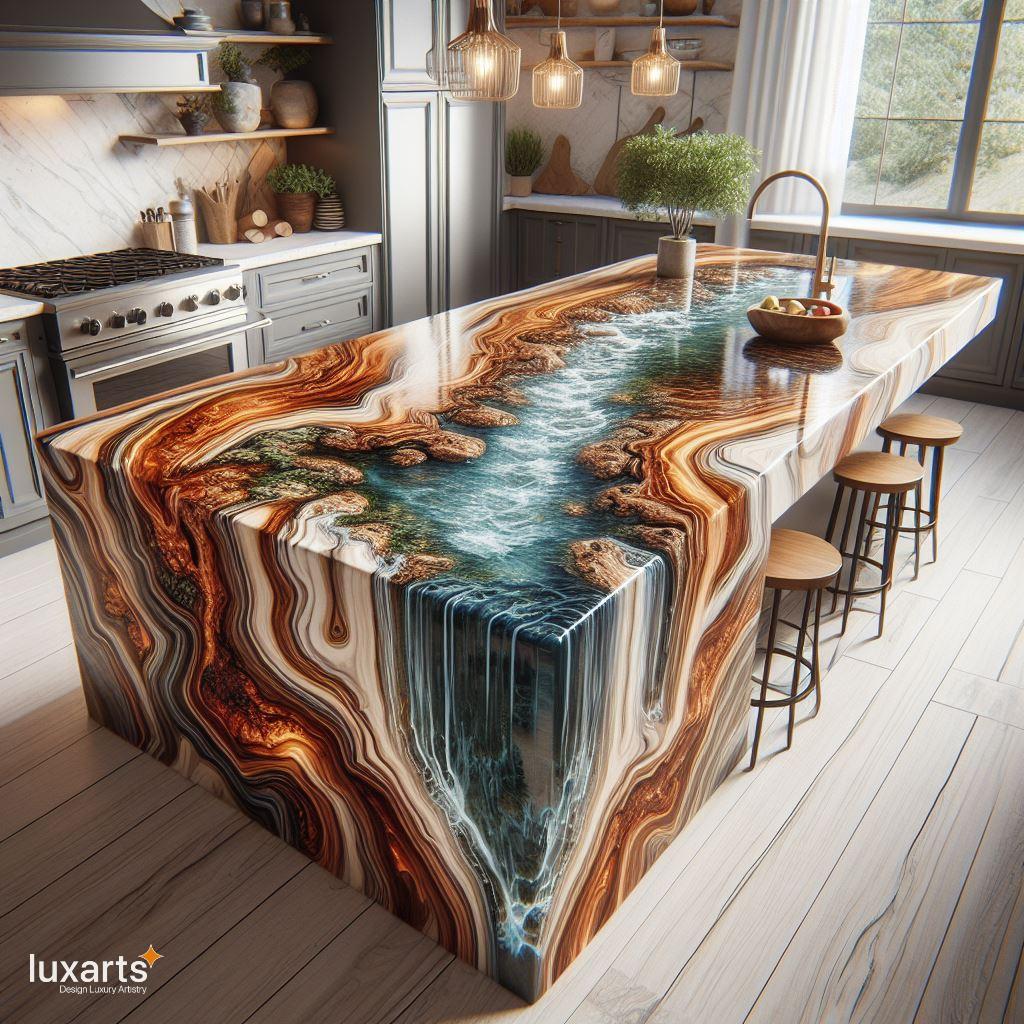
Choose the Right Type of Natural Wood
As mentioned earlier, there are various types of natural wood to choose from, each with its own unique characteristics. When selecting the type of wood for your kitchen island, consider factors such as durability, color, and grain pattern. Some woods, like oak and maple, are known for their strength and durability, while others, like cherry and walnut, have a warm and rich color. Choose a wood that not only looks beautiful but also fits your lifestyle and needs.
Experiment with Different Epoxy Colors and Finishes
Epoxy comes in a variety of colors and finishes, so don’t be afraid to experiment with different combinations. You can choose a clear, glossy finish for a sleek and modern look or opt for a matte finish for a more subtle effect. Additionally, you can mix different colors of epoxy to create unique patterns and designs. The possibilities are endless, so have fun and get creative! 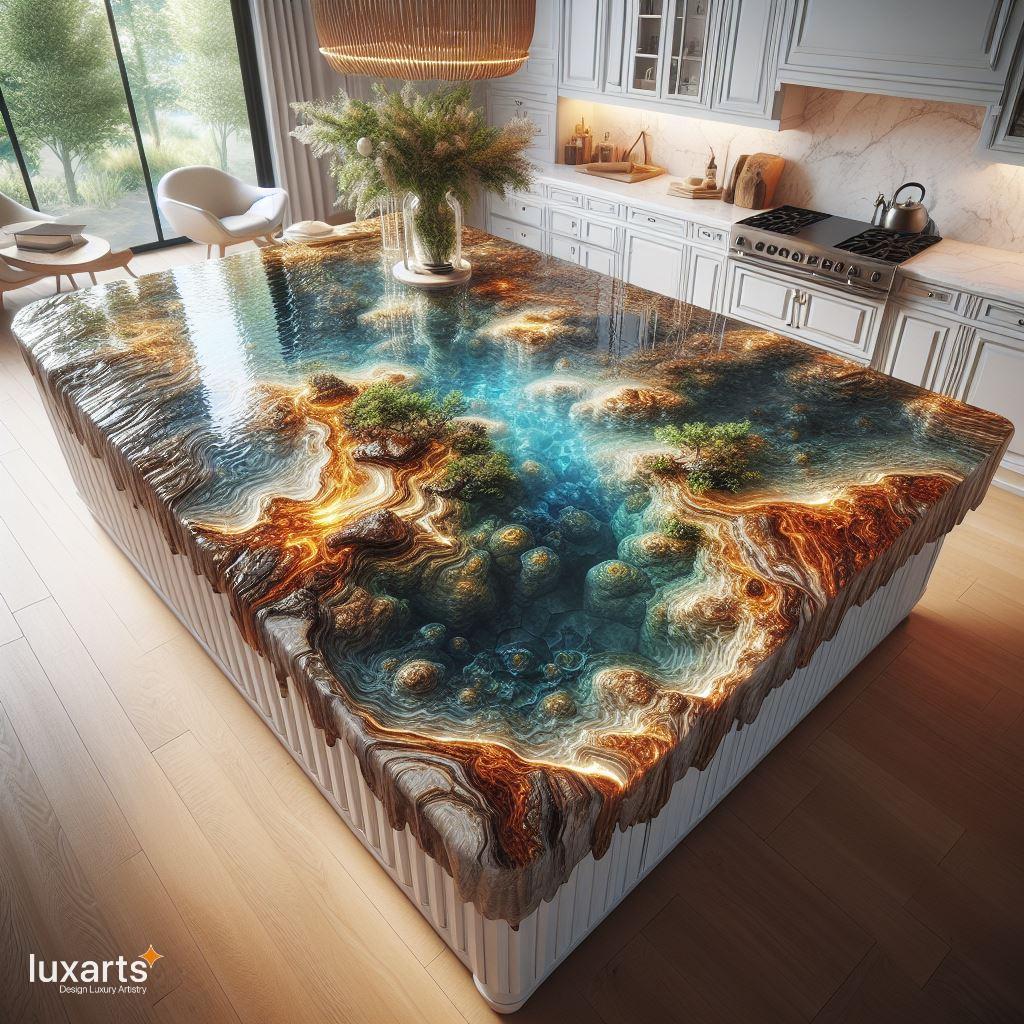
Benefits of Using Natural Wood and Epoxy for Kitchen Islands
Now that we’ve explored the design options and ways to incorporate natural wood and epoxy into your kitchen island, let’s discuss the benefits of using these materials.
Aesthetics
One of the main reasons homeowners choose natural wood and epoxy for their kitchen islands is for its aesthetic appeal. The combination of warm, organic wood and sleek, glossy epoxy creates a beautiful and unique look that adds character to any kitchen. It also allows you to customize your island to fit your personal style and taste.
Durability
Both natural wood and epoxy are known for their durability, making them an ideal choice for high-traffic areas like the kitchen. Natural wood is resistant to scratches and dents, while epoxy is heat-resistant and can withstand spills and stains. When combined, these materials create a strong and durable surface that can last for years with proper care and maintenance.
Easy Maintenance
Speaking of maintenance, another benefit of using natural wood and epoxy for kitchen islands is that they are easy to clean and maintain. Natural wood can be wiped down with a damp cloth and periodically treated with oil to keep it looking its best. Epoxy can be cleaned with a mild soap and water solution, making it easy to remove any spills or stains. This low-maintenance combination is perfect for busy households. 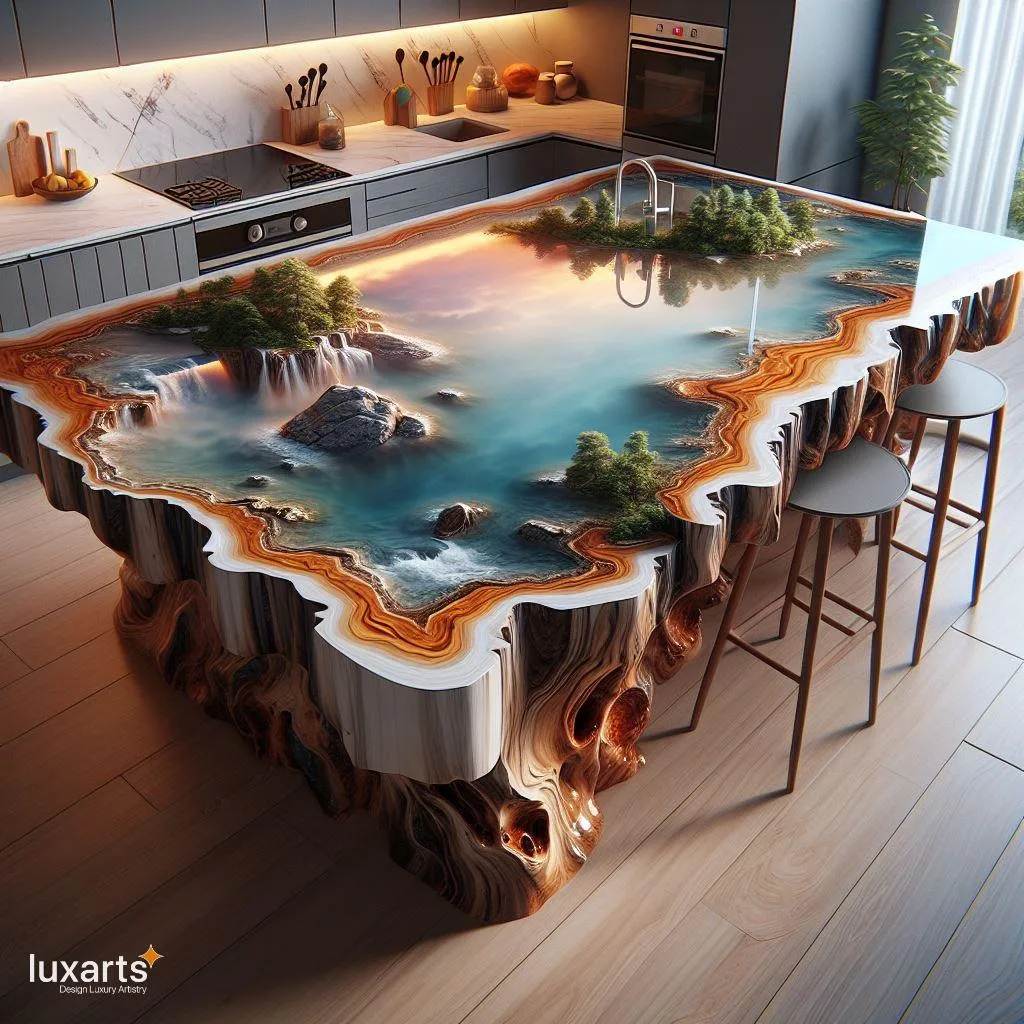
Maintenance Tips for Natural Wood and Epoxy Kitchen Islands
To ensure your natural wood and epoxy kitchen island stays in top condition, here are some maintenance tips to keep in mind:
- Clean up spills and stains immediately to prevent them from seeping into the wood or epoxy.
- Use a cutting board when preparing food on your kitchen island to avoid scratches and damage to the surface.
- Avoid placing hot pots and pans directly on the surface of your kitchen island, as this can cause damage to the epoxy.
- Periodically treat the natural wood with oil to maintain its shine and protect it from moisture.

Cost Comparison: Natural Wood and Epoxy vs. Other Materials for Kitchen Islands
When it comes to the cost of a natural wood and epoxy kitchen island, it is important to consider both materials separately. Natural wood can range in price depending on the type of wood and the size of your island. On average, you can expect to pay between $500-$2000 for a natural wood kitchen island. Epoxy, on the other hand, can be more expensive, with prices ranging from $10-$50 per square foot. This means that for a standard-sized kitchen island (around 30 square feet), you can expect to pay between $300-$1500 for the epoxy alone. However, keep in mind that the durability and low maintenance of this material may save you money in the long run. Compared to other materials commonly used for kitchen islands, such as granite or quartz, natural wood and epoxy can be a more affordable option. Additionally, the unique and customizable design options make it a worthwhile investment for those looking to add a touch of nature to their kitchen. 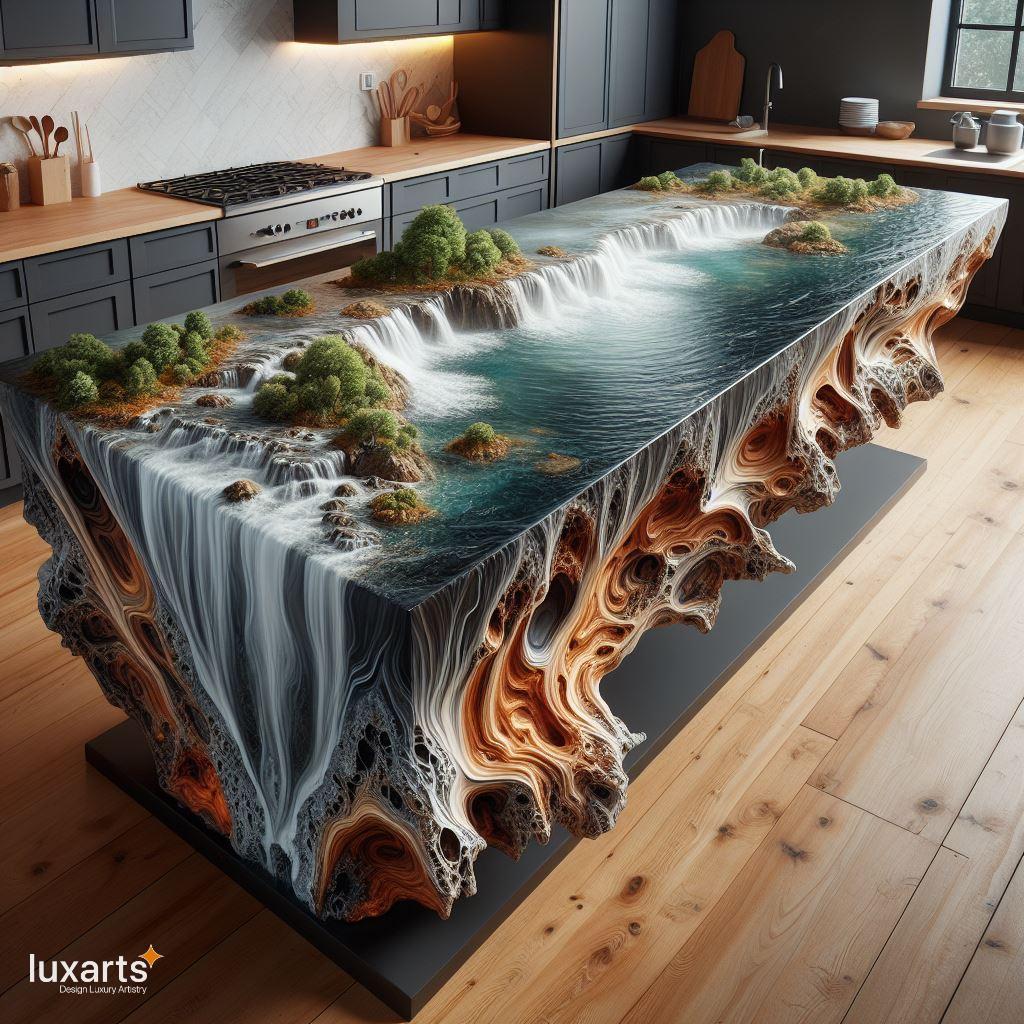
Conclusion
In conclusion, a natural wood and epoxy kitchen island is a beautiful and practical addition to any kitchen. Its unique combination of warm, organic wood and sleek, glossy epoxy creates a harmonious blend of nature and modernity. With various design options and benefits, it’s no wonder this trend has gained popularity in recent years. So why not consider incorporating natural wood and epoxy into your kitchen island design? It’s sure to make a statement and add a touch of nature to your space.
NOTE: All images in this post are AI-generated and intended solely for inspiration. These are not real products available for sale, and we do not operate any online store or website for purchases.
